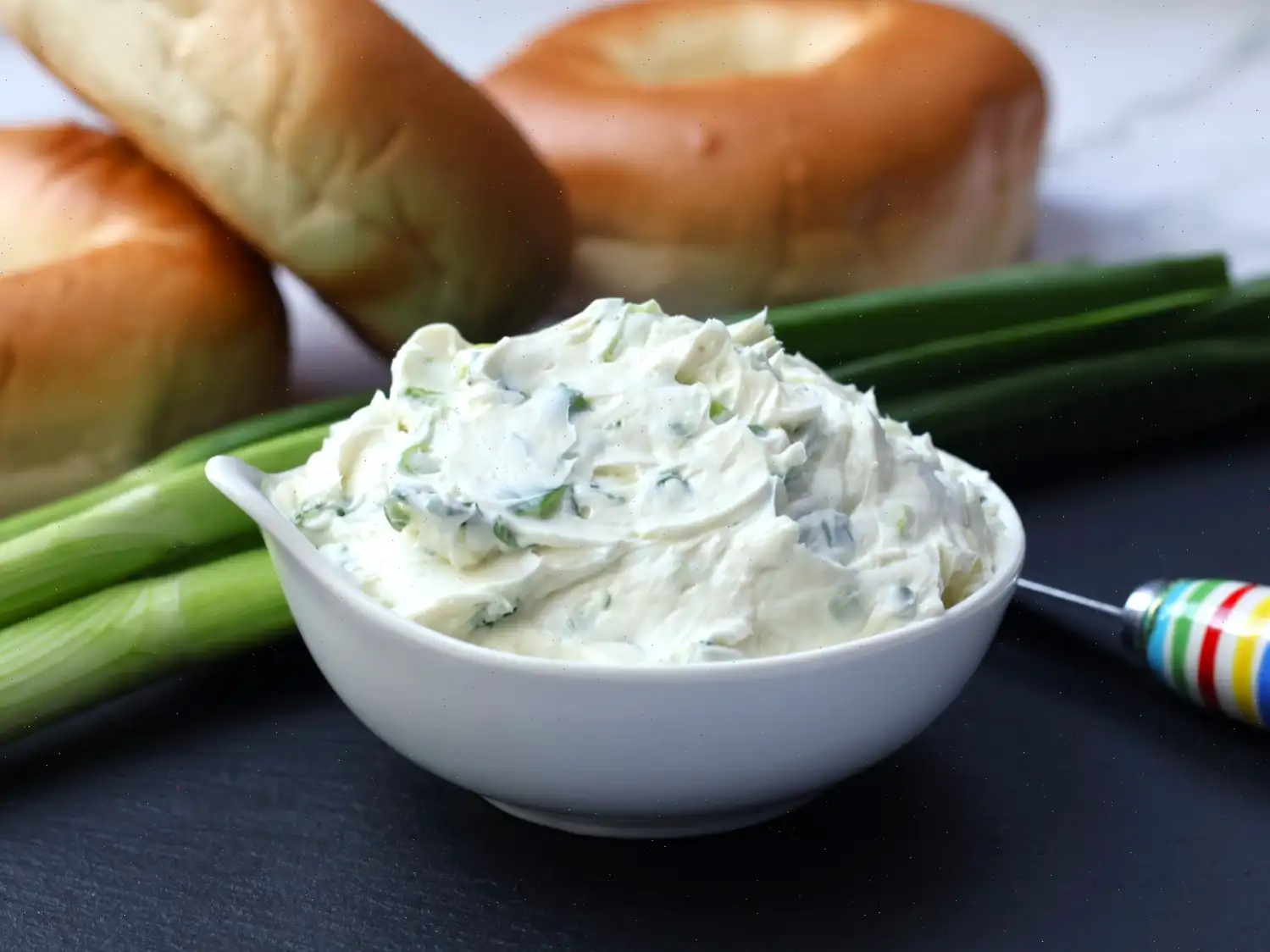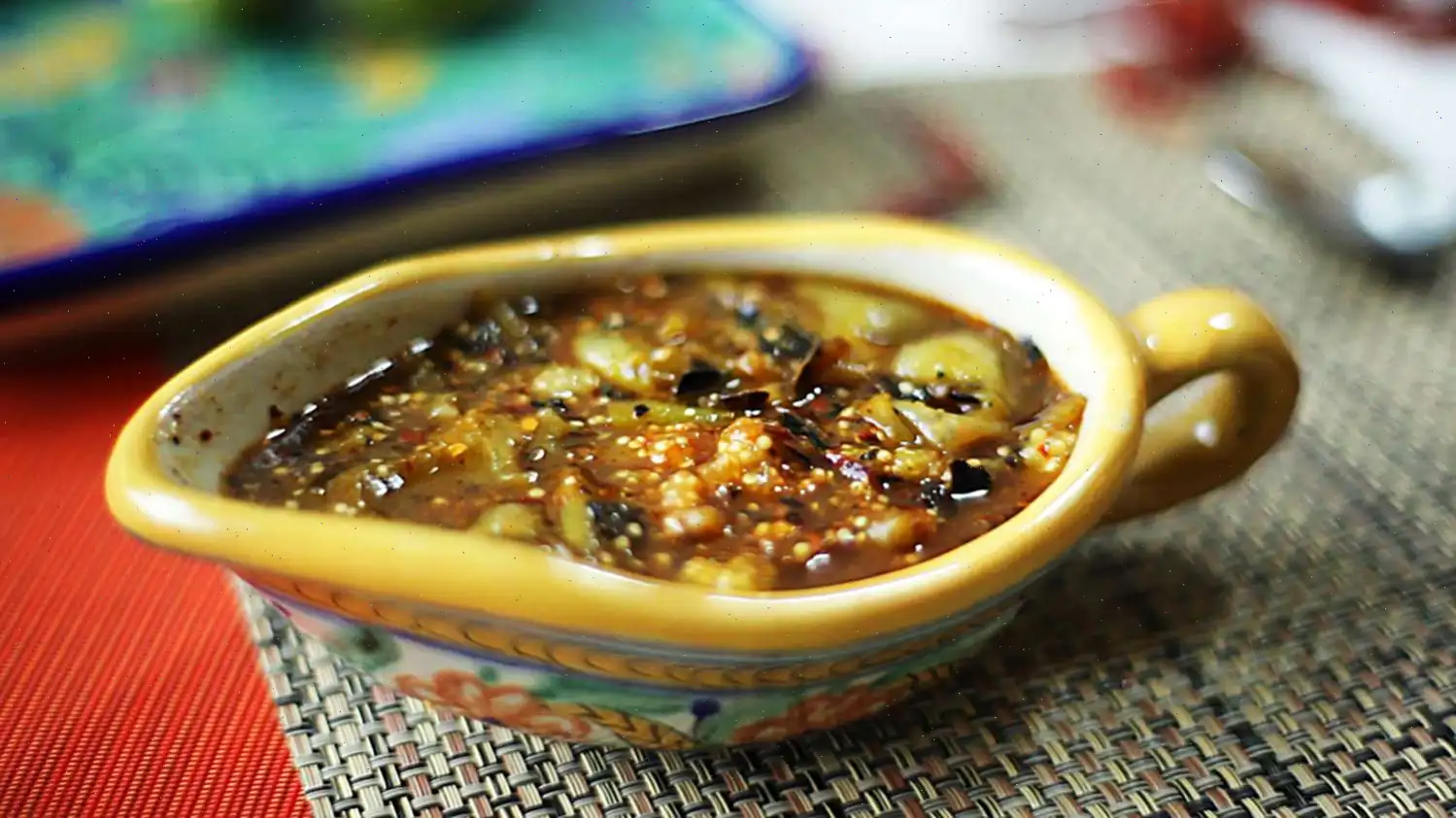
Scallion Cream Cheese Recipe
Ingredients
- 1 (8 ounce) whipped cream cheese, softened
- 2 scallions, white and green parts, minced
- 1/4 teaspoon salt
- 1/4 teaspoon garlic powder
- 1/8 teaspoon white pepper
Directions
- Place the softened cream cheese in a bowl.
- Add the minced scallions, salt, garlic powder, and white pepper to the cream cheese. Mix thoroughly until the ingredients are well combined.
- Transfer the mixture back into the original cream cheese for easy storage, or store in an airtight in the refrigerator.
Nutrition Facts (per serving)
| Nutrient | Amount | % Daily Value |
|---|---|---|
| Calories | 101 | - |
| Total Fat | 10g | 13% |
| Saturated Fat | 6g | 29% |
| Cholesterol | 29mg | 10% |
| Sodium | 156mg | 7% |
| Total Carbohydrate | 2g | 1% |
| Dietary Fiber | 0g | 0% |
| Total Sugars | 1g | - |
| Protein | 2g | 4% |
| Vitamin C | 1mg | 1% |
| Calcium | 30mg | 2% |
| Iron | 0mg | 1% |
| Potassium | 49mg | 1% |
Servings Per Recipe: 8
* Percent Daily Values are based on a 2,000 calorie diet. Your daily values may be higher or lower depending on your calorie needs.
** Nutrient information is not available for all ingredients. Amount is based on available nutrient data.
Scallion Cream Cheese is a simple yet flavorful spread made from a blend of creamy cheese and fresh, crunchy scallions. This recipe is a popular choice for those looking for an easy and quick topping for bagels, crackers, sandwiches, or wraps. Its perfect for breakfast, brunch, or as a savory appetizer.
History and Origin
Scallion cream cheese has its roots in American cuisine, where it has become a beloved topping for bagels and other breakfast foods. While the exact origin is unclear, the combination of cream cheese with scallions likely emerged in the early 20th century, around the time when bagels became a popular item in New York City. Cream cheese itself has a long history, originating in Europe and gaining widespread popularity in the United States after the invention of the spreadable, softer version of cream cheese by William Lawrence in 1872. The addition of scallions to the mix is a reflection of the American love for savory, fresh, and simple ingredients that complement each other well.
Regional Variations and Characteristics
While scallion cream cheese is widely associated with the United States, it is also enjoyed in various forms in different parts of the world. In New York City, for instance, its a staple in delis and bagel shops. In other regions, variations might include the addition of herbs like dill or chives, garlic, or even a bit of lemon zest to add brightness. The recipe can be adapted based on local tastes, making it a versatile condiment that can reflect regional culinary preferences.
What Makes It Different from Other Similar Dishes?
Scallion cream cheese is often compared to other cream cheese spreads, such as plain cream cheese or those mixed with smoked salmon. However, the key difference lies in the use of fresh scallions, which add a mild onion flavor and crunch, making the spread more complex and aromatic. Unlike more indulgent spreads like flavored butters or cream cheeses mixed with heavy spices, scallion cream cheese is light, refreshing, and subtly savory. This makes it a perfect option for those seeking a healthier or more restrained topping compared to richer cream cheese-based spreads.
Where Is It Commonly Served?
Scallion cream cheese is most commonly served in North America, particularly in breakfast and brunch settings. It is a classic topping for bagels, often paired with smoked salmon, tomatoes, or cucumbers. It also appears in deli sandwiches, wraps, and on toast. Additionally, its often used as a dip for vegetables or crackers. This versatile spread has made its way into homes, cafes, and restaurants, especially in areas where bagels are a culinary tradition. Beyond bagels, it is also a delicious addition to crackers, as a sandwich spread, or even as a component in savory hors doeuvres.
Interesting Facts
- Scallion cream cheese is often served in delis and bagel shops, especially in New York City, where bagels are an iconic food item.
- In some recipes, other fresh herbs such as dill, parsley, or chives can be added to enhance the flavor.
- The combination of cream cheese and scallions is both rich and refreshing, making it a versatile spread that works well with many foods.
- Though traditionally served as a breakfast or brunch item, scallion cream cheese has also found its way into lunch and dinner menus, especially in wraps and sandwiches.
Whether youre enjoying a simple bagel or assembling a gourmet sandwich, scallion cream cheese brings a delightful burst of flavor to your meal. Its versatility and ease of preparation make it a favorite choice for home cooks and professional chefs alike.








